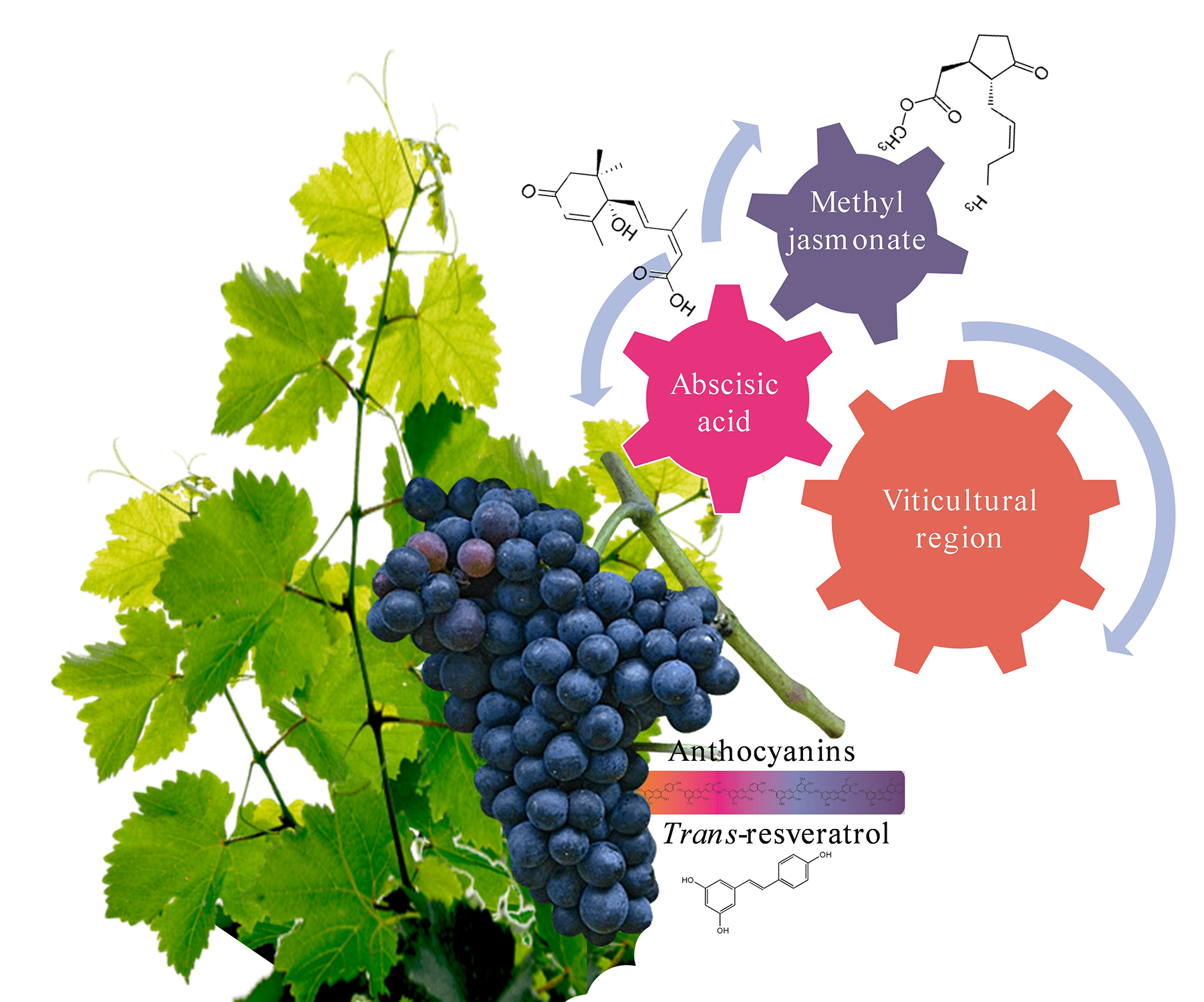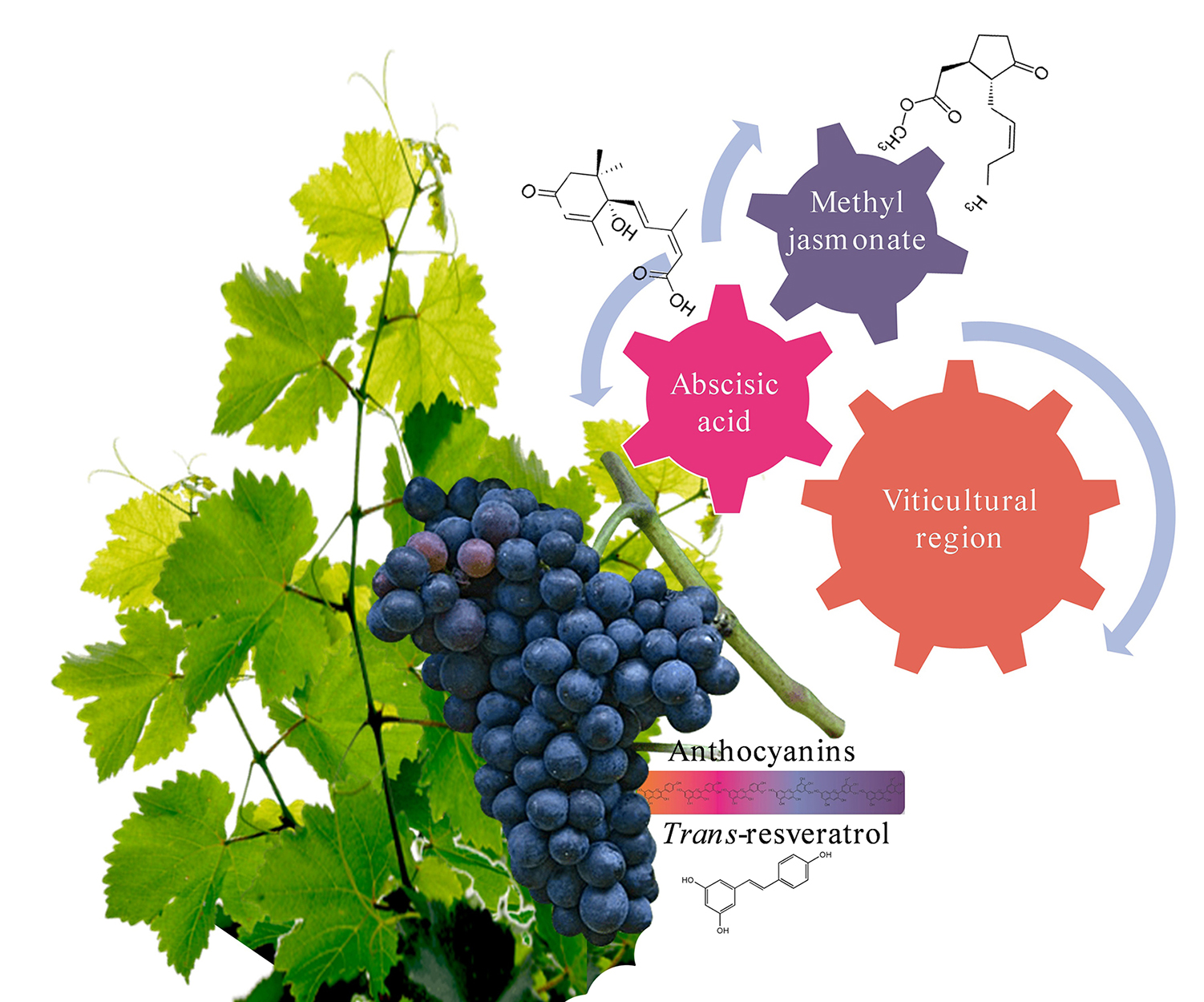Abscisic acid and methyl jasmonic acid module anthocyanins and trans-resveratrol accumulation in berry skin of five red Vitis vinifera cvs. in two contrasting viticultural regions of Mendoza-Argentina
Palabras clave:
elicitores, compuestos fenólicos, vid, hormonas vegetalesResumen

Berry skins from red grape cultivars contain significant amounts of polyphenols that contribute to wine quality and provide health benefits. These compounds can be elicited by plant hormones. The aim of this work was to increase the content of anthocyanins (ANT) and trans-resveratrol (T-RES) by application of abscisic acid (ABA) and methyl jasmonate (MeJA) in five red V. vinifera cvs. (Bonarda, Malbec, Syrah, Cabernet Sauvignon, and Pinot Noir), in two Argentinean contrasting growing regions (Santa Rosa and Valle de Uco). Results showed positive and differential effects of ABA and MeJA on the total ANT content for the diverse cultivars with changes in the proportions of blue and red ANT. ABA increased total ANT in both viticultural region, while MeJA had a positive effect only in Santa Rosa. Also, ABA and MeJA induced an accumulation of T-RES in different cultivars, regardless of the region; T-RES accumulation elicited by ABA was not previously described. This work brings out the possibility to use these hormones as practical tools to produce high-quality red wines in two contrasting viticultural regions.
Highlights
-
The effect of application of abscisic acid and methyl jasmonate on trans-resveratrol and anthocyanin accumulation were analyzed on five Vitis vinifera red cultivars in two different viticultural areas in Mendoza province, Argentina.
-
Abscisic acid and methyl jasmonate had a positive and differential effect on anthocyanin on the different cultivars with changes in the proportions of blue and red anthocyanins.
-
Abscisic acid increased total anthocyanins in both viticultural region, while methyl jasmonate effect was region dependent.
-
Abscisic acid and methyl jasmonate induced accumulation of trans-resveratrol in different cultivars, regardless of the region.
-
The accumulation of trans-resveratrol elicited by ABA was not previously described.
Descargas

Descargas
Publicado
Cómo citar
Número
Sección
Licencia
Aquellos autores/as que tengan publicaciones con esta revista, aceptan las Políticas Editoriales.










.jpg)




